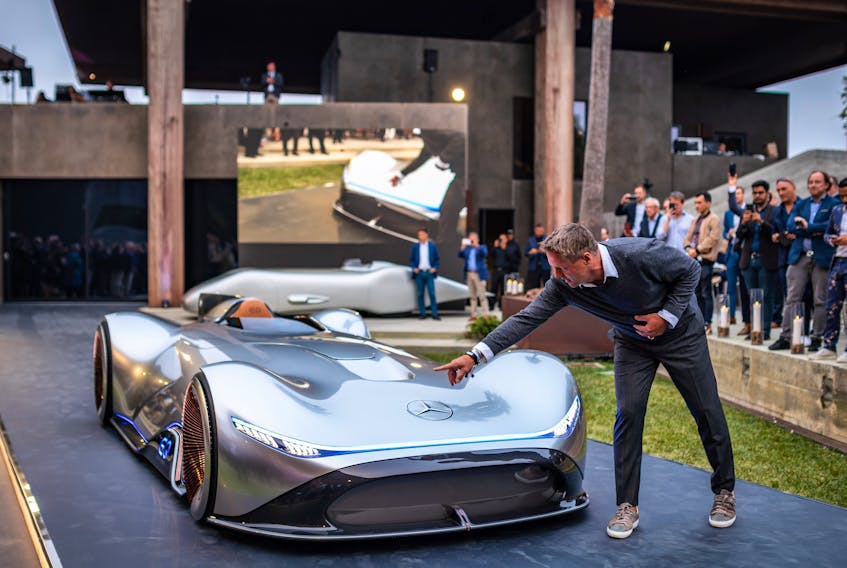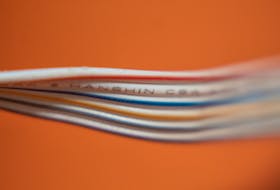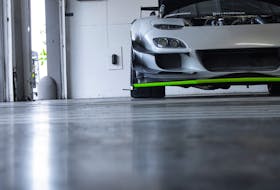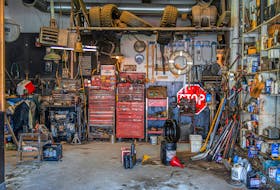TORONTO, Ont. — International motor shows like those in New York, Paris and Geneva let visitors glimpse into the future and see dreams made real.
Concept cars have added excitement to what would otherwise be glorified showrooms since Harley Earl’s fantastic prototypes for General Motors’ travelling Motorama exhibits in the 1950s.
At their best, concept cars get people to think beyond the constant churn of consumer-friendly model-year updates and to imagine something bigger, a grand vision for the future of the automobile: something cool. At their worst, concepts are costly stains on a brand, Frankensteins that cannot be un-seen.
The journey of a concept from designer’s sketch to auto show plinth is secretive and expensive one that Adrian van Hooydonk knows well. As design director for BMW Group, he’s ultimately responsible for the design of everything from new motorcycles to Mini Coopers to Rolls-Royce’s upcoming SUV, to auto show concept cars.
“A concept car should be fairly spontaneous, it has to come straight from the heart. … It’s unfiltered, it’s what we’re dreaming of,” van Hooydonk said at a recent auto show. Making a concept car takes about a year, whereas the design work alone for a production car takes three years.
Concepts are one-offs. They don’t come off a production line. There’s no tooling. Every single part — from the windows to the headlights to the body — is either milled or made by hand and carefully assembled. What you see on a show stand is more like a mixed-media sculpture than a something you’d drive on the street.
Ideas for concepts can come from several places, from within the design team or from top management.

Sometimes the goal is simply to prime the market for an upcoming model, van Hoodonk said. Examples of that includes the recent BMW M8 Gran Coupe, or Toyota’s lone line of Supra concepts.
Other concepts, the more exciting ones, start with a blank sheet of paper and allow genuine experimentation.
“It can have several starting points, sometimes it’s just a theme or a topic, like electric mobility or autonomous drive, that sets us thinking” van Hooydonk said. BMW calls its grand, experimental concepts “vision” cars.
At Mercedes-Benz, they’re called “wow” cars, but the idea is essentially the same. “They’re based on fantasy. There are no technical constraints,” said Mercedes exterior designer Achim Badstuebner.
Every concept car starts as someone’s sketch on paper, he explained. Once a sketch is selected to become a concept car, it gets digitized as a 3D model. From there, the data is fed into a giant five-axis milling machine that can create the rough shape of a full-size car overnight.
“There’s a steel under-frame and they basically cover it with foam and mill it with an offset, of about 40-50 millimetres,” said Badstuebner. On top of the milled foam they put synthetic modeling clay so the car’s surfaces can be refined by hand.
“Imagine Play-Doh, but put in the fridge so it gets hard. That’s basically what we use,” he said.
The whole process could be done digitally, but it isn’t.
“The shape has to be done by hand,” Badstuebner said. You could mill a perfect physical model from digital data. “But, you feel it’s missing the human touch, the soul is missing in the surfaces.” That’s why clay sculptors still play an equally important role today as they did decades ago.
Those clay models never leave the design studio. You can’t fly a delicate, temperature-sensitive clay car around the world and put it under the spotlights at a crowded show where someone might fall onto it.
The clay models are laser scanned, and turned back into digital data which can be used to create moulds.
If the concept car is just an exterior shape, without an interior, it will likely be made of Epowood, which is a kind of plastic that you can shape like wood. If the concept needs to be more detailed, it’s made of carbon-fibre, Badstuebner said.
The expert model makers tasked with making the concepts often have to solve problems nobody has ever tackled before. For example, for BMW’s centenary, the company envisioned a motorcycle that kept itself upright, the Motorrad Vision Next 100.
“As we gave that as an assignment to the modeling team,” van Hooydonk said, “I thought, okay we’ll probably have to fake it, sort of Photoshop it.” A few months later, the modeling team called him into the studio to have a look at something. “There was a motorcycle upright, without a stand. They pushed it and it leaned over but then it came back upright.” They’d used two counter-rotating gyroscopes to make a one-off motorcycle that wouldn’t fall over, just for the auto show circuit.
The whole concept-car process takes place under total secrecy. The design studio and computer systems at BMW are protected by an extra layer of security: key cards and an additional firewall. Only a small group of employees are granted access.
“It’s difficult to find a location where you can actually photograph a concept without anybody seeing,” said van Hooydonk. “Everybody has a camera or two in their pockets, and now there’s drone technology available to everyone. We’ve seen it all.”
Creating a concept car is not cheap. Badstuebner said the cost could reach into the millions of Euros. Van Hooydonk declined to put a price on it but said, “It’s much more expensive than buying a 7 Series.”
Given the extreme cost and effort required to make these concepts, why bother? For one thing, it’s good publicity for the companies whose concepts actually do manage to capture people’s imagination. That alone may be enough to drive new customers into a dealership. Exciting concepts get more people talking than mundane model-year refreshes.
Beyond that, van Hooydonk said: “With concepts, as a brand, you show that you’re full of ideas. … I think customers want to shop with a brand which they feel has answers for all the problems that are coming or all the challenges that are ahead.”









